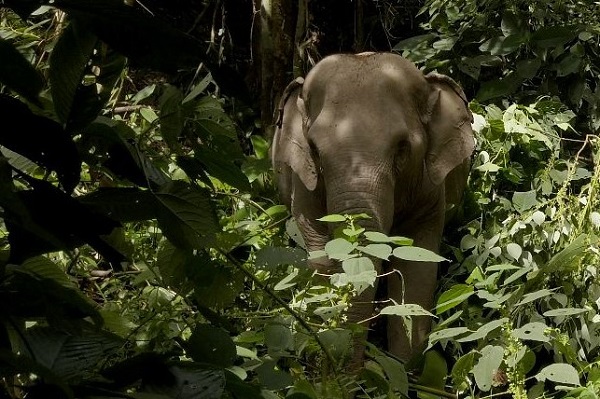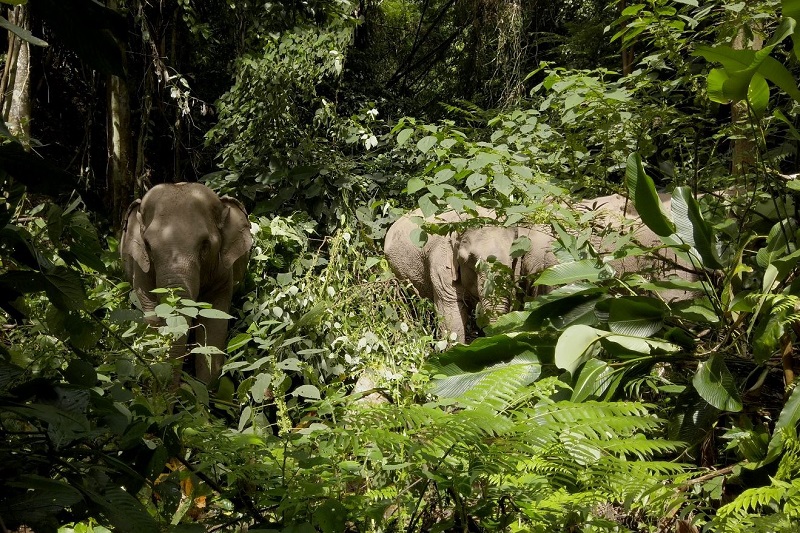Mae Mah, along with her adopted son Dor Khoun Mueang, and other females Mae Noy and Mae Boun Mee Yai have now been free in the Nam Pouy National Protected Area in Laos for over three years. The elephants were released by the Elephant Conservation Center (ECC) in Laos in March 2019 and are closely monitored to ensure their wellbeing and safety.


Beautiful Mae Mah in the forests of Laos
In early March, thanks to the support of IEP, the Elephant Conservation Center’s team attached GPS collars to all four individuals in the elephant release program. This is an exciting development, and will allow the tracking team to keep a closer eye on this precious herd and observe what they are up to as they adapt to life in the wild. This video shows all four elephants wearing their new GPS collars.
Mae Mah appears to be the matriarch of the released herd and is the elephant most feared by the tracking team due to her protective nature. Over the last three years, she has never been spotted without the group and is always very close to Dor Khoun Mueang. Yet in late March she disappeared from the group all together. Thanks to her GPS collar, the ECC team could see where she was, and our tracking team went out to make sure everything was okay. They found her with a large wild bull several kilometers from Dor Khoun Mueang and the rest of the group. She stayed with the bull for almost two weeks before eventually returning. This gives our team hope that she may have successfully mated with the bull, and we may have our first new addition to our release herd in the future.
Mae Mah and the rest of the herd have been roaming the south-western part of Nam Pouy ever since their release in 2019 and show no signs of wanting to venture outside of this 25,000-hectare area they now call home. Amazingly, in three years, there have been no instances of human-elephant conflict between this herd and the local communities. The only time our tracking team needs to intervene is when the group gets too close to the Thai - Lao border that runs along the west of the Nam Pouy Area and leads into Doi Phu Ka National Park where wild elephants also exist. This doesn’t happen often and is only considered an issue during the early years of this release project. Once these four are considered wild they will be free to come and go across the border like their wild counterparts do.
This video shows Mae Mah feeding on bamboo, an important food source for wild elephants.
It's wonderful to know that Mae Mah is doing so well in the forest and adapting to life as a wild elephant. This photo shows Mae Mah on the left with her fellow herd mates foraging nearby.


